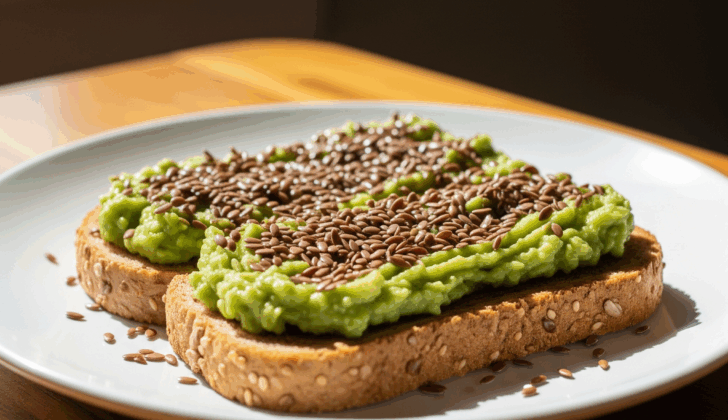Simple Tips for a Happier Gut and Better Health
Most of us have heard that fiber is good for us—but did you know that most people don’t get nearly enough? Fiber does more than just “keep things moving.” It supports gut health, helps control blood sugar, keeps you full longer, and can even lower cholesterol.
If you’re wondering how to sneak more fiber into your meals (without completely overhauling your diet), you’re in the right place. In this post, we’ll walk through easy, practical ways to increase fiber—from simple food swaps to helpful supplements like psyllium husk.
Why Fiber Matters
Fiber is a type of carbohydrate your body can’t fully digest. It comes in two forms:
-
Soluble fiber (dissolves in water): helps lower cholesterol and control blood sugar.
-
Insoluble fiber (doesn’t dissolve): keeps your digestive system moving and prevents constipation.
A fiber-rich diet can help:
-
Support a healthy weight
-
Improve digestion and regularity
-
Balance blood sugar
-
Lower the risk of heart disease and some cancers
-
Feed your gut’s healthy bacteria
How Much Do You Need?
The recommended daily fiber intake:
-
Women: 25 grams per day
-
Men: 38 grams per day
Most people get less than 15 grams! But with just a few changes, it’s easy to close that gap.
Simple Food Swaps to Boost Fiber
1. Choose Whole Grains Over Refined Grains
Instead of white bread, pasta, or rice, opt for:
-
Whole grain bread or wraps
-
Brown rice or quinoa
-
Oatmeal instead of sugary cereal
Tip: Look for “100% whole grain” or “whole wheat” as the first ingredient on food labels.
2. Add Beans and Lentils
Beans are fiber powerhouses! Try adding:
-
Black beans to tacos
-
Chickpeas to salads
-
Lentils to soups or stews
-
Hummus as a dip or spread
Just ½ cup of cooked black beans has around 7 grams of fiber.
3. Don’t Peel Your Produce
Leave the skin on apples, pears, cucumbers, and potatoes (just wash well!). The skin is where much of the fiber lives.
4. Snack Smart
High-fiber snacks keep you full and satisfied. Try:
-
Air-popped popcorn
-
Trail mix with nuts and dried fruit
-
Raw veggies and guacamole
-
A small handful of almonds or pistachios
Add Fiber Without Changing What You Eat
If overhauling your meals sounds overwhelming, try these easy add-ons:
5. Sprinkle Seeds
-
Chia seeds: 1 tbsp = 5 grams of fiber
-
Flax seeds (ground): great in yogurt, oatmeal, or smoothies
-
Hemp seeds: fiber + protein + omega-3s
6. Stir in Psyllium Husk
Psyllium husk is a natural, plant-based fiber supplement. It’s a type of soluble fiber that forms a gel when mixed with water, helping to support digestion and regularity.
You can:
-
Mix it into smoothies
-
Stir it into applesauce or yogurt
-
Bake it into muffins or breads
Start with a small amount (like ½ tsp) and drink plenty of water. Too much too quickly can cause bloating or cramping.
Fiber Supplements: What to Know
If it’s hard to get enough fiber from food alone, supplements can help. Here are some common ones:
| Supplement | Type | Best For |
|---|---|---|
| Psyllium Husk | Soluble | Constipation, cholesterol, fullness |
| Inulin (from chicory root) | Soluble | Gut health, mild constipation |
| Methylcellulose | Soluble | Gentle on digestion |
| Wheat Dextrin | Soluble | Easy to mix in food and drinks |
Tip: Always start slowly and drink plenty of fluids with any fiber supplement.
Kid-Friendly Ways to Add Fiber
If you’re trying to get your whole family on board, here are some ideas:
-
Add pureed veggies to spaghetti sauce
-
Use whole grain pasta or tortillas
-
Offer fruit smoothies with chia or flax
-
Make oatmeal cookies with oats and raisins
Watch Out for Low-Fiber Pitfalls
Even healthy-looking foods can be low in fiber:
-
White rice and white bread
-
Juice (whole fruit has more fiber)
-
Sweetened yogurts (watch for added sugars)
Pro tip: If it comes in a box and says “low-carb” or “keto,” it may also be low in fiber. Always read the label!
Final Thoughts
Getting more fiber doesn’t mean eating cardboard or making dramatic changes overnight. It’s about small shifts that add up: choosing whole grains, adding a spoonful of seeds, trying a fiber supplement like psyllium husk, or simply snacking smarter.
You’ll feel the difference—in your energy, digestion, and overall well-being.
So go ahead: toss some beans in your salad, add berries to your breakfast, or stir psyllium into your smoothie. Your gut will thank you!












